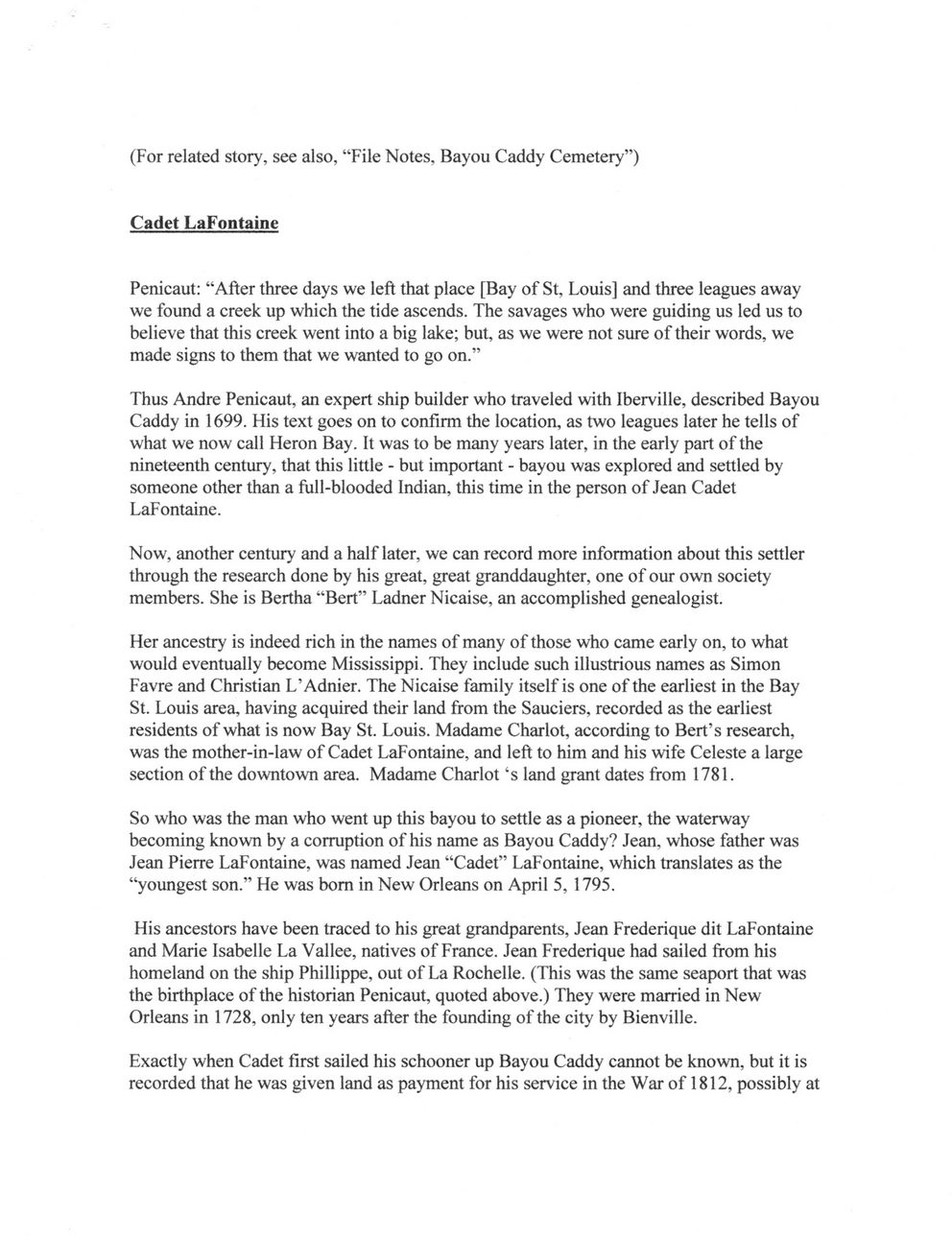This text was obtained via automated optical character recognition.
It has not been edited and may therefore contain several errors.
(For related story, see also, ?File Notes, Bayou Caddy Cemetery?) Cadet LaFontaine Penicaut: ?After three days we left that place [Bay of St, Louis] and three leagues away we found a creek up which the tide ascends. The savages who were guiding us led us to believe that this creek went into a big lake; but, as we were not sure of their words, we made signs to them that we wanted to go on.? Thus Andre Penicaut, an expert ship builder who traveled with Iberville, described Bayou Caddy in 1699. His text goes on to confirm the location, as two leagues later he tells of what we now call Heron Bay. It was to be many years later, in the early part of the nineteenth century, that this little - but important - bayou was explored and settled by someone other than a full-blooded Indian, this time in the person of Jean Cadet LaFontaine. Now, another century and a half later, we can record more information about this settler through the research done by his great, great granddaughter, one of our own society members. She is Bertha ?Bert? Ladner Nicaise, an accomplished genealogist. Her ancestry is indeed rich in the names of many of those who came early on, to what would eventually become Mississippi. They include such illustrious names as Simon Favre and Christian L?Adnier. The Nicaise family itself is one of the earliest in the Bay St. Louis area, having acquired their land from the Sauciers, recorded as the earliest residents of what is now Bay St. Louis. Madame Chariot, according to Bert?s research, was the mother-in-law of Cadet LaFontaine, and left to him and his wife Celeste a large section of the downtown area. Madame Chariot?s land grant dates from 1781. So who was the man who went up this bayou to settle as a pioneer, the waterway becoming known by a corruption of his name as Bayou Caddy? Jean, whose father was Jean Pierre LaFontaine, was named Jean ?Cadet? LaFontaine, which translates as the ?youngest son.? He was bom in New Orleans on April 5, 1795. His ancestors have been traced to his great grandparents, Jean Frederique dit LaFontaine and Marie Isabelle La Vallee, natives of France. Jean Frederique had sailed from his homeland on the ship Phillippe, out of La Rochelle. (This was the same seaport that was the birthplace of the historian Penicaut, quoted above.) They were married in New Orleans in 1728, only ten years after the founding of the city by Bienville. Exactly when Cadet first sailed his schooner up Bayou Caddy cannot be known, but it is recorded that he was given land as payment for his service in the War of 1812, possibly at

LaFontaine, Cadet 一document-047